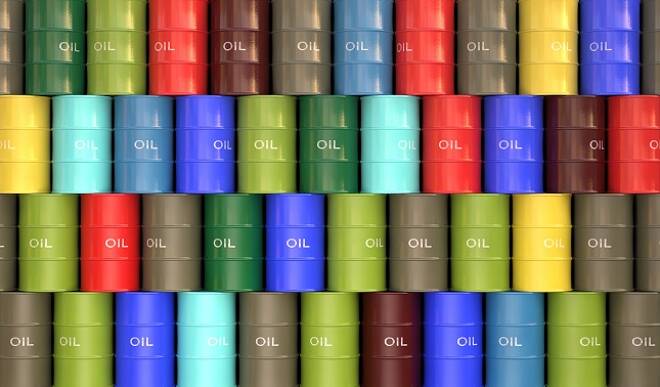Advertisement
Advertisement
Trump, Saudi King Agree to Boost Production … But How Much and When?
By:
We’re looking for extreme volatility on Monday because the urgency demonstrated by Trump’s phone call could trigger a two-sided trade. Furthermore, we don’t know what the Saudi King promised Trump and what the time table will be for such a request. We’re likely to see the announcement of another increase by the Saudi’s, but I don’t think it’s going to be in the neighborhood of 2 million barrels per day. Additionally, it’s more likely to be gradual than all at once.
In response to week-end events, it’s not too early to start preparing for some volatility in the markets on Monday, especially the crude oil market.
On Saturday, President Trump said in a tweet, “Just spoke to King Salman of Saudi Arabia and explained to him that, because of the turmoil & disfunction in Iran and Venezuela, I am asking that Saudi Arabia increase oil production, maybe up to 2,000,000 barrels, to make up the difference … Prices to high! He has agreed!”
According to reports, Saudi King Salman and Trump emphasized the need to preserve oil market stability and the efforts of oil-producing countries to compensate for any potential shortage, in a phone call reported by Saudi state media on Saturday. However, the statement did not mention any intention by Saudi Arabia to raise production to 2 million barrels per day.
Obviously, President Trump was reacting to last week’s 8.2% gain in West Texas Intermediate and Brent crude oil’s 5.25% increase. This was on top of the previous week’s 5.75% jump in WTI and 3.07% in Brent.
The price action suggest escalating concerns that U.S. sanctions could create a supply deficit later this year if output remains the same and demand continues on its record pace.
The developing situation in the market strongly indicates there is little room for error at this time. With the U.S. strongly urging support of the sanctions against Iran, there’s pressure on other countries to join the U.S. in stopping oil from Iran, the fifth-largest oil producer in the world, from hitting the market. This would amount to about 4.7 million barrels per day (bpd), or almost 5 percent of the world’s oil.
Strict enforcement of the Iranian sanctions along with potential losses in oil production from Venezuela, Libya and Canada could outstrip the production increase agreed to by OPEC and Russia on June 22. President Trump’s call to the Saudi King Salman on a Saturday, less than 24-hours after the crude oil close, strongly suggests this is an urgent matter.
We’re looking for extreme volatility on Monday because the urgency demonstrated by Trump’s phone call could trigger a two-sided trade.
We could see a spike to the upside because it suggests that a deficit could occur much earlier than expected. However, this is unlikely because exhausted buyers may not want to chase the market higher from current levels. Additionally, any talk of more supply is usually bearish.
The market could also plunge from Friday’s close, or after an initial spike to the upside, because of ambiguities in the report. Firstly, we know that Trump made the call. That has been verified. However, we don’t know if Trump just threw in the 2,000,000 barrel per day increase, or if he made a more formal request.
Furthermore, we don’t know what the Saudi King promised Trump and what the time table will be for such a request. We do know that the world’s top oil exporter plans to pump as much as 11 million barrels of oil per day (bpd) in July, an oil industry source told Reuters this week, after OPEC agreed with Russia and other oil producers to raise output by about 1 million bpd. We also know that the Saudi’s don’t want to see high priced oil slowdown the momentum of the growing global economy.
We’re likely to see the announcement of another increase by the Saudi’s, but I don’t think it’s going to be in the neighborhood of 2 million barrels per day. Additionally, it’s more likely to be gradual than all at once.
About the Author
James Hyerczykauthor
James Hyerczyk is a U.S. based seasoned technical analyst and educator with over 40 years of experience in market analysis and trading, specializing in chart patterns and price movement. He is the author of two books on technical analysis and has a background in both futures and stock markets.
Advertisement
